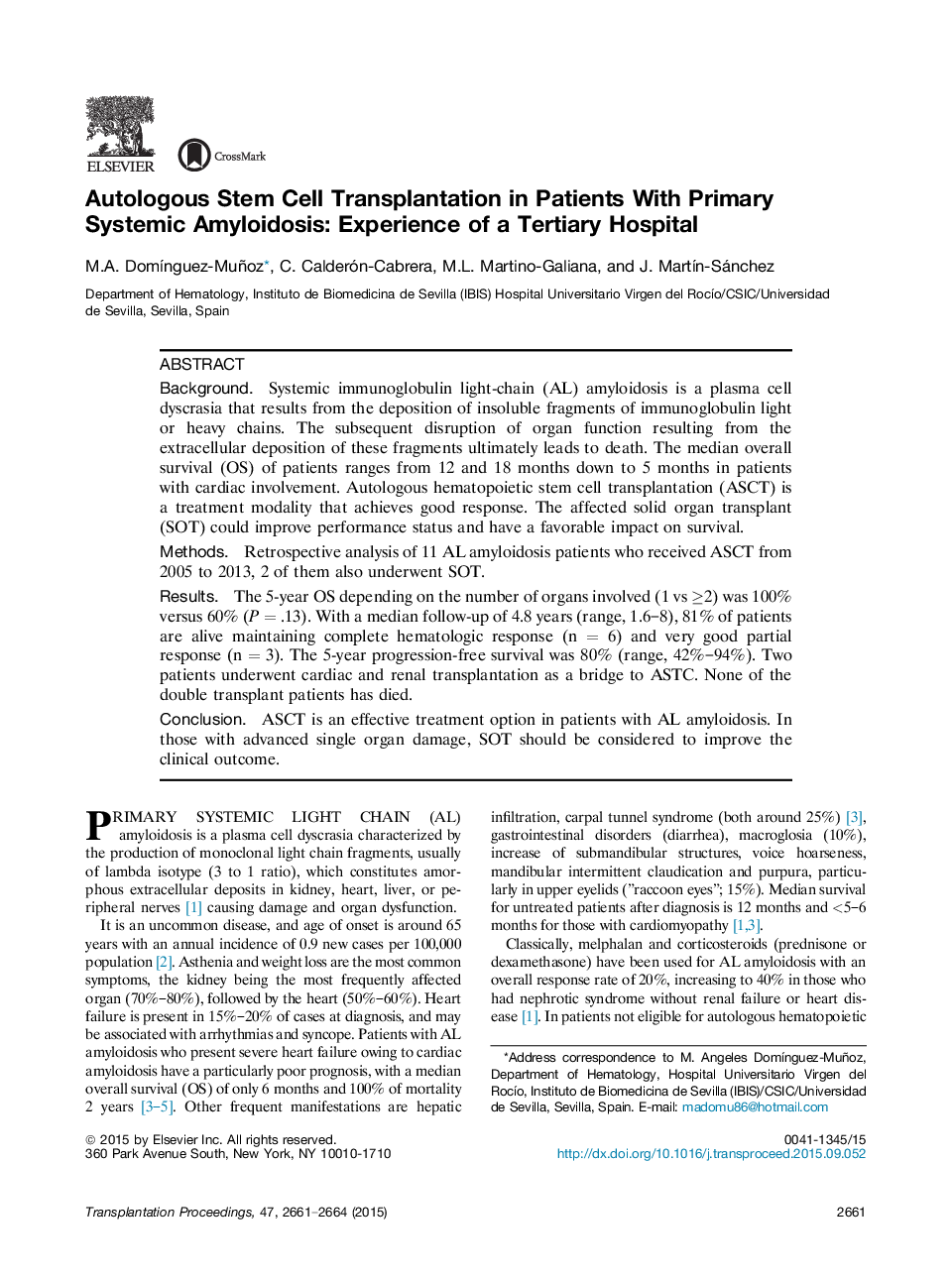| Article ID | Journal | Published Year | Pages | File Type |
|---|---|---|---|---|
| 4255905 | Transplantation Proceedings | 2015 | 4 Pages |
•ASCT is an effective therapy for AL amyloidosis allowing better response and survival rates.•Potential ASCT candidates should be carefully selected to reduce transplant-related mortality and improve clinical outcomes.•In selected patients with advanced organ damage, SOT should be considered to decrease mortality and improve outcomes of ASCT in AL amyloidosis.
BackgroundSystemic immunoglobulin light-chain (AL) amyloidosis is a plasma cell dyscrasia that results from the deposition of insoluble fragments of immunoglobulin light or heavy chains. The subsequent disruption of organ function resulting from the extracellular deposition of these fragments ultimately leads to death. The median overall survival (OS) of patients ranges from 12 and 18 months down to 5 months in patients with cardiac involvement. Autologous hematopoietic stem cell transplantation (ASCT) is a treatment modality that achieves good response. The affected solid organ transplant (SOT) could improve performance status and have a favorable impact on survival.MethodsRetrospective analysis of 11 AL amyloidosis patients who received ASCT from 2005 to 2013, 2 of them also underwent SOT.ResultsThe 5-year OS depending on the number of organs involved (1 vs ≥2) was 100% versus 60% (P = .13). With a median follow-up of 4.8 years (range, 1.6–8), 81% of patients are alive maintaining complete hematologic response (n = 6) and very good partial response (n = 3). The 5-year progression-free survival was 80% (range, 42%–94%). Two patients underwent cardiac and renal transplantation as a bridge to ASTC. None of the double transplant patients has died.ConclusionASCT is an effective treatment option in patients with AL amyloidosis. In those with advanced single organ damage, SOT should be considered to improve the clinical outcome.
